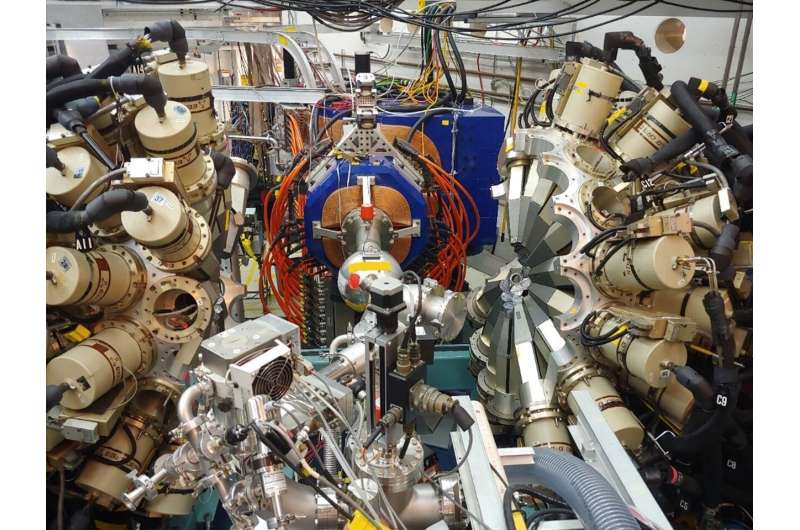The Argonne Gas-Filled Analyzer (AGFA). Credit: Argonne National Laboratory
Physicists have recently synthesized a new transfermium isotope lawrencium-251 and studied the α decay of lawrencium-253 in more detail. This is the first new lawrencium isotope synthesized directly over the past two decades and it is also the first new isotope synthesized using the Argonne Gas-Filled Analyzer (AGFA) at the Argonne National Laboratory. The study has been published in Physical Review C.
Spectroscopic studies of transfermium nuclei can provide information on the evolution of deformation towards the predicted spherical shell stabilized region of super-heavy nuclei. In particular, the orbitals near the Fermi surface in nuclei around the deformed shell gaps at Z = 100, N = 152 may be intruders from above the spherical shell gap. Therefore, these nuclei are a stringent testing ground for models used to describe super-heavy nuclei.
In the experiment, lawrencium-251, 253 nuclei were synthesized by using the fusion-evaporation reactions (titanium-50 + thallium-203, 205), respectively and the titanium-50 beam was delivered by the Argonne Tandem Linac Accelerator System (ATLAS).
Researchers found that the level order of the proton Nilsson orbital, which originates from the spherical orbital located just above the spherical Z = 114 gap, changes in the neutron-deficient lawrencium isotopes. This scenario was reproduced successfully in the cranked shell model with the particle-number-conserving method. These calculations also underscored an important role of ε6 hexacontetrapole deformation in the evolution of the single-proton energies in the lawrencium isotopes.
More information: T. Huang et al, Discovery of the new isotope Lr251 : Impact of the hexacontetrapole deformation on single-proton orbital energies near the Z=100 deformed shell gap, Physical Review C (2022). DOI: 10.1103/PhysRevC.106.L061301
Provided by Chinese Academy of Sciences
























